Siding is the most preferred cladding material used in private construction. It allows you to hide all the flaws in the construction, makes the look of the house stylish and elegant.
In addition, the installation of siding is quite simple, intuitive and can be done without the involvement of outside workers.
Considering the relatively low cost of the material, siding can definitely be called the leader among the cladding materials used for low-rise buildings.
The advancement of the material required the further development of the model range, which resulted in the emergence of new types of siding - imitation of finishing with a stone, log, brick or timber. New items have significantly expanded the capabilities of the material and strengthened its position.
Imitation timber siding has the form of panels, repeating the structure of a section of the wall, folded from high quality timber. The installed cladding is practically indistinguishable from the original, with the possible exception of a smoother and better surface.
Wherein, the service life of the siding is much higher than that of natural material, and all the time of use, the appearance of the cladding practically does not change, which cannot be said about the state of the material made of wood.
There are two types of timber siding:
- Vinyl;
- Metal.
ATTENTION!
Both types quite naturally imitate natural timber, have high performance and low cost. Vinyl siding is more popular, although metal has many useful properties that are somewhat superior to PVC.
Vinyl siding consists of PVC plastic with additives that increase the strength and rigidity of the material.
Advantages of vinyl siding under a bar:
- Durable and durable material;
- Does not react to water exposure;
- Light weight, does not load the facade;
- Low price.
Disadvantages of vinyl siding:
- The linear dimensions of the panels vary significantly from exposure to temperature;
- At low winter temperatures, the material becomes brittle;
- Melts and deforms from fire;
- In the heat, harmful discharge is present.
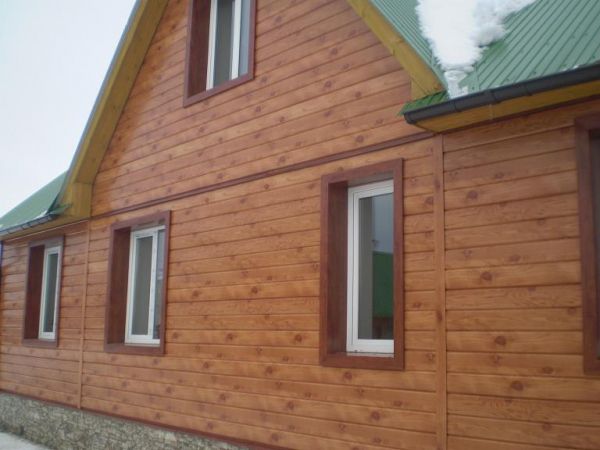
Vinyl Siding House
Metal siding is stamped from thin galvanized sheet steel with a wood texture applied with polymer paint. A strong protective colorless film is applied over the paint layer.
The advantages of metal siding imitation of a bar can be attributed:
- High strength;
- Long service life;
- Light weight, less than vinyl panels;
- Coefficient of thermal expansion than vinyl;
- Frost resistance, no deformation;
- Multi-layered protection provides high anti-corrosion qualities of the material.
Disadvantages of metal siding:
- Higher price than vinyl siding;
- When cutting with a grinder, the edge begins to rust;
- Less thermal insulation than vinyl.
In general, both types proved to be quite worthy in operation, although among users, preference is given to a greater extent to vinyl siding.
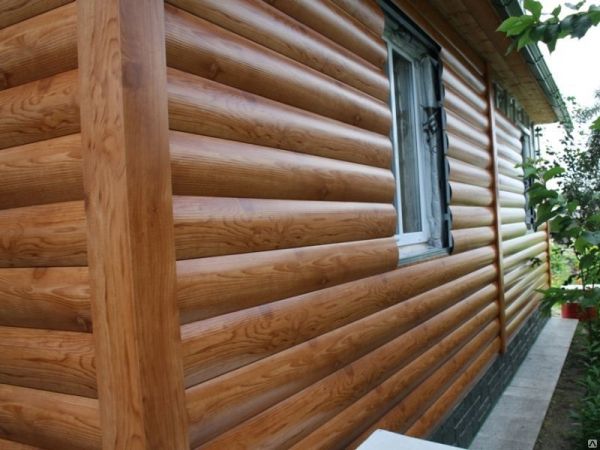
House with metal siding
Specifications
Technical characteristics - data on siding, which are important for calculations, determine the compliance of the material with the existing conditions and inform the buyer about all sizes of panels that are important for the production of work.
So, for metal siding, specifications reflect the following information:
- Panel length. Samples available from 0.6 to 6 m length;
- Profile height 4-26 mm;
- Working width (only the visible part, excluding the lock) - 20-24 cm;
- Overall width (with the lock) - 22.5-26.5cm;
- Metal thickness - 0.4 - 0.6 mm;
- Weight 1 sq. m. - 2.4-3.5 kg.
For vinyl panels, the average values are:
- Length 3-4 m;
- Width 20-30 cm;
- Plastic thickness 0.9-1.2 mm;
- Working temperature range from -50 to +50 degrees.
As you can see, the data for all positions have a fairly large spread of values, so it is important to have more accurate technical characteristics for the type of siding of interest.
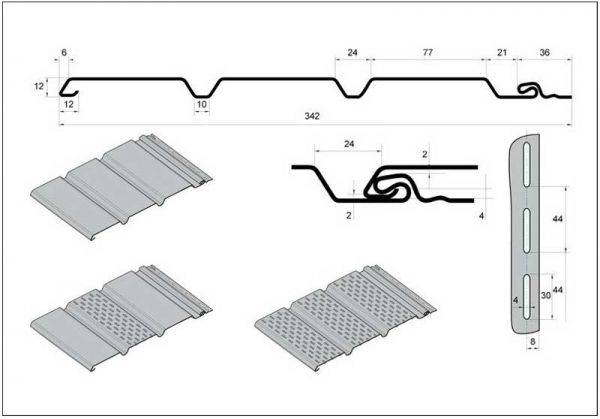
Specifications
Types of imitation under a bar
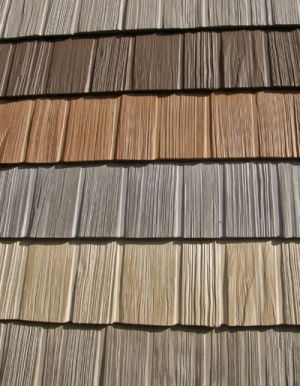 Imitation timber is a material for external and internal decoration of buildings made of natural wood - mainly pine, spruce or larch.
Imitation timber is a material for external and internal decoration of buildings made of natural wood - mainly pine, spruce or larch.
In fact, this is a kind of lining, assembled repeating the texture of the wall surface, assembled from a planed bar.
It is a flat board with beveled edges having a groove on one side and a thorn on the other for sequential assembly.
On the reverse side there are longitudinal compensation grooves, equalizing stresses during the collection or release of moisture, as well as promoting air movement.
Imitation of a bar is divided into grades according to the quality of the surface - the number of flaws per 1 running meter, the number of knots, the presence of cracks, etc.
Basically, a glued imitation of a bar is made, consisting of separate dies, spliced in the longitudinal direction into one panel of the desired length.
Wood is also intended for outdoor use, so it goes through a full drying cycle and is impregnated with compounds that protect against decay and fire - antiseptics and fire retardants.
By quality, imitation of a bar is divided into groups:
- A (Extra) - the highest grade of panels, no knots (or maximum 3 small ingrown knots per panel), no surface imperfections. Most expensive type;
- AB - transitional type between "Extra" and "First" grade, there is slight damage to the surface, small knots;
- B - the presence of a small number of small irregularities, microcracks... More than 3 knots are allowed located on the front side of the panel;
- ВС - transitional type between low and medium quality, the presence of falling out (dead) knots in number more than 3 per 1 rm. panels, there are non-critical chips or violations of the integrity of the spike or groove;
- C - chips, knots falling out or cracks are possible that do not violate the performance of the material. Resin pockets are allowed.
Not allowed:
- Through dropped knots;
- Resin pockets wider than 8mm;
- The presence of wane on the front sides;
- The presence of "fringe", which is a consequence of poor quality surface treatment.
The thickness of the panels is from 16 to 35 mm, the width is in the range of 110-190 mm.

Imitation L-bar
The manufacturer of this type of cladding is the MetallProfil plant in Lobnya. Siding L-timber is a novelty on the market of facing materials. This is a metal siding with a specific groove shape.(it is believed that its profile is made in the form of Mount Elbrus).
The letter "L" stands for "Light" - light. Used both horizontally and vertically, panel metal thickness is 0.4-0.5 mm.
Specifications:
- Working width - 240 mm (2 parts 120 mm each);
- Full panel width - 264 mm;
- Length - from 0.5 to 6 m;
- Profile height - 15 mm.
The panels are covered with a protective layer, painting very realistically imitates the structure of a tree... There are all the necessary additional elements that fully correspond to the main profile in all respects. The assembly is simple, self-tapping screws are used as fasteners.
House with metal siding imitation l-bar
Which is better - siding or imitation timber?
Comparison of siding and timber imitation is difficult to make correctly - different materials, characteristics, type of installation, operational features.
However, most striking features can be distinguished:
- Primarily, prices for siding and timber imitation differ significantly: siding is almost twice cheaper;
- Siding does not change any characteristics or appearance... Periodic maintenance is required for imitation of a bar - impregnation, protective coating, painting, etc. Without this, the natural material will blacken and rot;
- Imitation of a bar better withstands mechanical loads- no dents remain upon impact, wood is stronger and tougher;
- Thermal expansion typical of vinyl panels, practically absent in timber imitation;
- For natural material, there is practically no difference in the mounting location- vertically or horizontally;
- Imitation of a bar does not emit harmful substances as it does with vinyl siding.
From the point of view of operation, siding is in the lead, since it does not require maintenance and does not change its properties and appearance over time.
Nevertheless, for supporters of natural materials, environmentally friendly and safe, the choice of imitation of a bar is undeniable and obvious. Both points of view have a right to exist, giving users a choice based on personal preference.

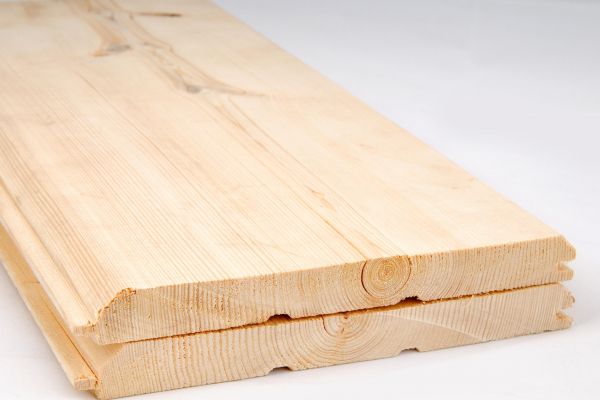
Imitation
Installation highlights
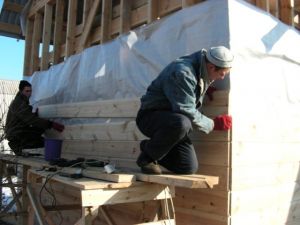 Installation of siding imitation of timber is carried out according to the general rules applicable to all types of material.
Installation of siding imitation of timber is carried out according to the general rules applicable to all types of material.
For a more in-depth study of the installation technology it is strongly recommended to read the instructions from the manufacturer, since for specific types of siding, individual specific installation requirements are possible.
Fastening of all elements - profiles, starter strips, panels, etc. produced with a slight backlash, the parts are slightly "dangling", do not press tightly. This is necessary to ensure material movement with temperature changes in dimensions.
Procedure:
- Wall surface preparation;
- Installation of the lathing- installation of vertical slats that serve as supports for siding panels. The battens should form a flat vertical plane, for which each strip is attached to a vertical suspension for drywall guides and adjusted before final fixing;
- Installation of starting and corner profiles, decoration of window and door openings with appropriate elements;
- Installation of panels... Docking along the length is carried out by the H-profile strictly in one place along a vertical straight line;
- Installation of finishing profiles, the rest of the cladding design elements.
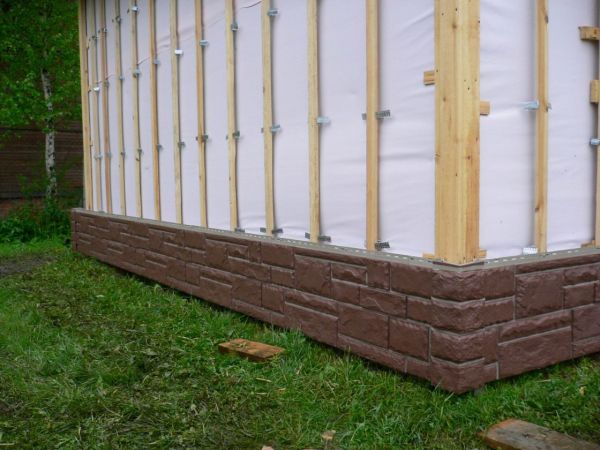
Installation of the lathing
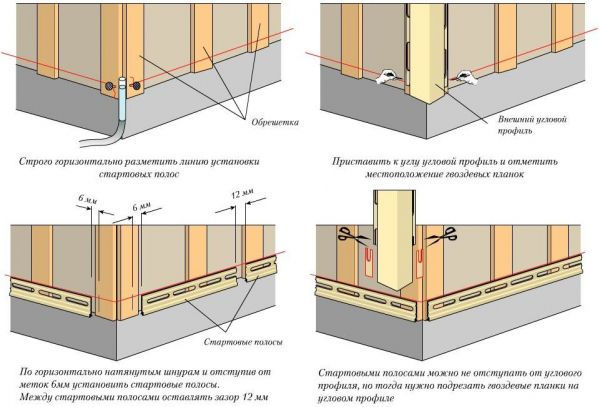
Mounting corners
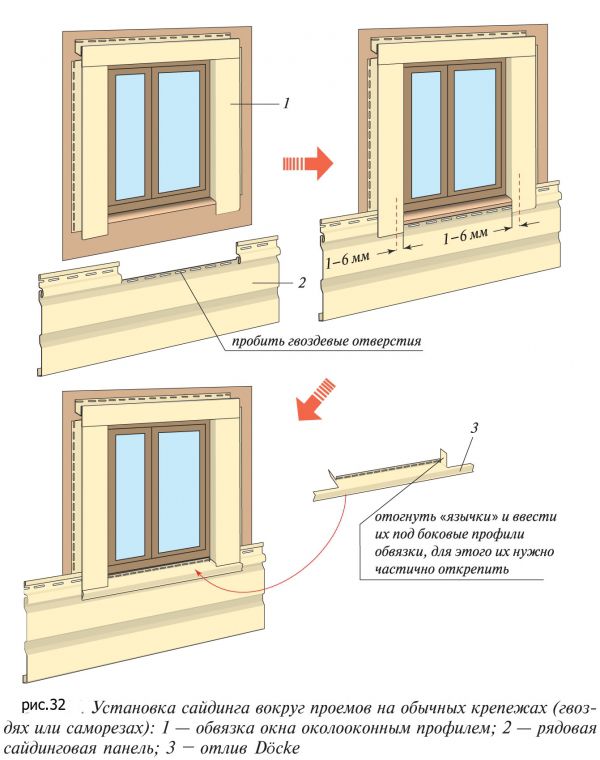
Installation of siding by the window
Conclusion
The use of imitation timber siding is an effective and high-quality way of finishing buildings, quite simple and allowing you to do it yourself.
The result is a smooth and neat surface, indistinguishable from a high-quality log wall, retaining its properties for the entire service life and requiring no maintenance.
The cost of wall decoration is thus much lower than when using natural materials, and the quality of the cladding is noticeably higher.
Useful video
In this video, you will learn how to decorate a house with imitation of a bar:
In contact with




